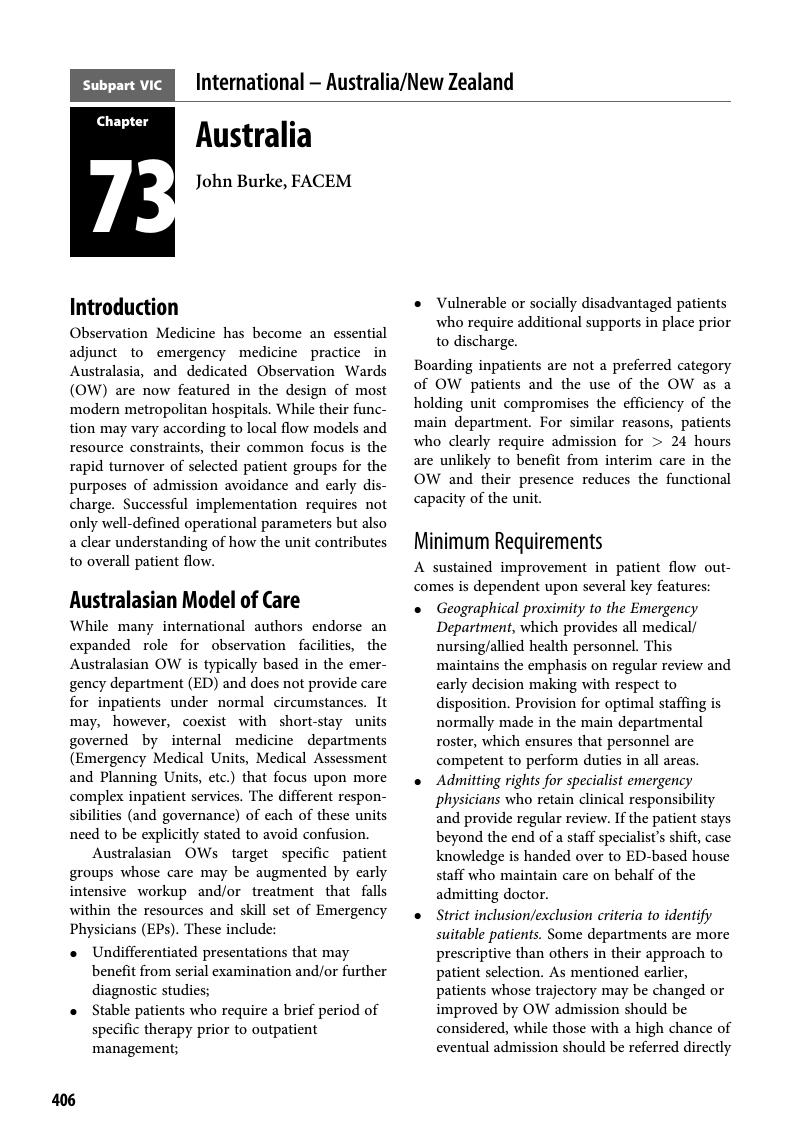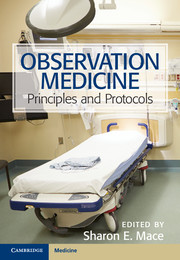Book contents
- Observation Medicine
- Observation Medicine
- Copyright page
- Contents
- Advance Praise
- About the Editors
- Contributors
- Foreword: Onward and Upward
- Preface
- Part I Administration: Key Concepts of Observation Medicine, and Developing and Maintaining an Observation Unit
- Part II Observation Medicine: Clinical Setting and Education
- Part III New Developments in Observation Medicine
- Part IV Clinical
- Part V Financial
- Part VI International
- Subpart VIA International – Africa
- Subpart VIB International – Asia
- Subpart VIC International – Australia/New Zealand
- Chapter 73 Australia
- Chapter 74 New Zealand
- Subpart VID International – Europe
- Subpart VIE International – South America
- Part VII Evidence Basis for Observation Medicine
- Part VIII Clinical Protocols
- Part IX Administrative Policies
- Part X Order Sets
- Prologue
- Index
- References
Chapter 73 - Australia
from Subpart VIC - International – Australia/New Zealand
Published online by Cambridge University Press: 31 March 2017
- Observation Medicine
- Observation Medicine
- Copyright page
- Contents
- Advance Praise
- About the Editors
- Contributors
- Foreword: Onward and Upward
- Preface
- Part I Administration: Key Concepts of Observation Medicine, and Developing and Maintaining an Observation Unit
- Part II Observation Medicine: Clinical Setting and Education
- Part III New Developments in Observation Medicine
- Part IV Clinical
- Part V Financial
- Part VI International
- Subpart VIA International – Africa
- Subpart VIB International – Asia
- Subpart VIC International – Australia/New Zealand
- Chapter 73 Australia
- Chapter 74 New Zealand
- Subpart VID International – Europe
- Subpart VIE International – South America
- Part VII Evidence Basis for Observation Medicine
- Part VIII Clinical Protocols
- Part IX Administrative Policies
- Part X Order Sets
- Prologue
- Index
- References
Summary

- Type
- Chapter
- Information
- Observation MedicinePrinciples and Protocols, pp. 406 - 408Publisher: Cambridge University PressPrint publication year: 2017



